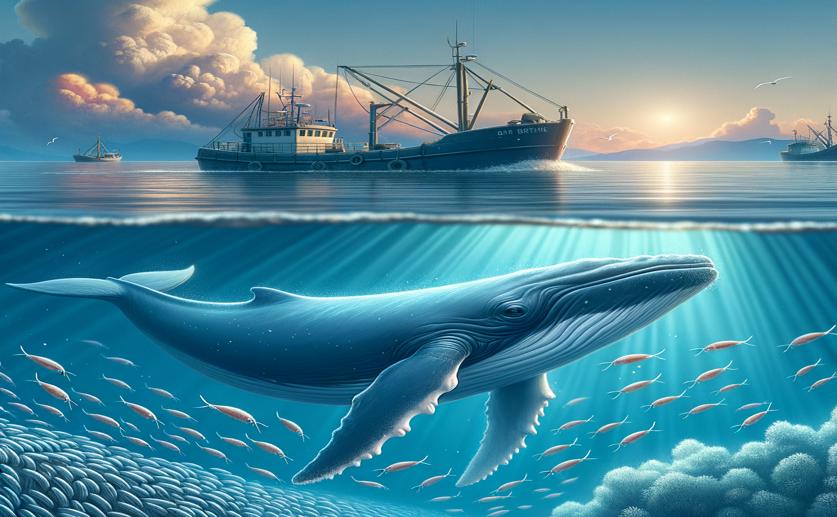
How Whaling and Krill Fishing Impact Whale-Krill Relationships
Jim Crocker
7th March, 2024

Image Source: Natural Science News, 2024
Key Findings
- In the Antarctic, despite fewer whales, krill numbers have unexpectedly declined, not increased
- A new model shows complex interactions can cause krill populations to fluctuate unpredictably
- The study suggests environmental factors and food web dynamics may explain the "krill paradox."
EnvironmentEcologyMarine Biology
References
Main Study
1) Effects of whaling and krill fishing on the whale-krill predation dynamics: bifurcations in a harvested predator-prey model with Holling type I functional response.
Published 6th March, 2024
https://doi.org/10.1007/s00285-024-02063-2
Related Studies
2) Baleen whale prey consumption based on high-resolution foraging measurements.
3) Modelling Southern Ocean ecosystems: krill, the food-web, and the impacts of harvesting.
Journal: Biological reviews of the Cambridge Philosophical Society, Issue: Vol 81, Issue 4, Nov 2006



 29th February, 2024 | Greg Howard
29th February, 2024 | Greg Howard